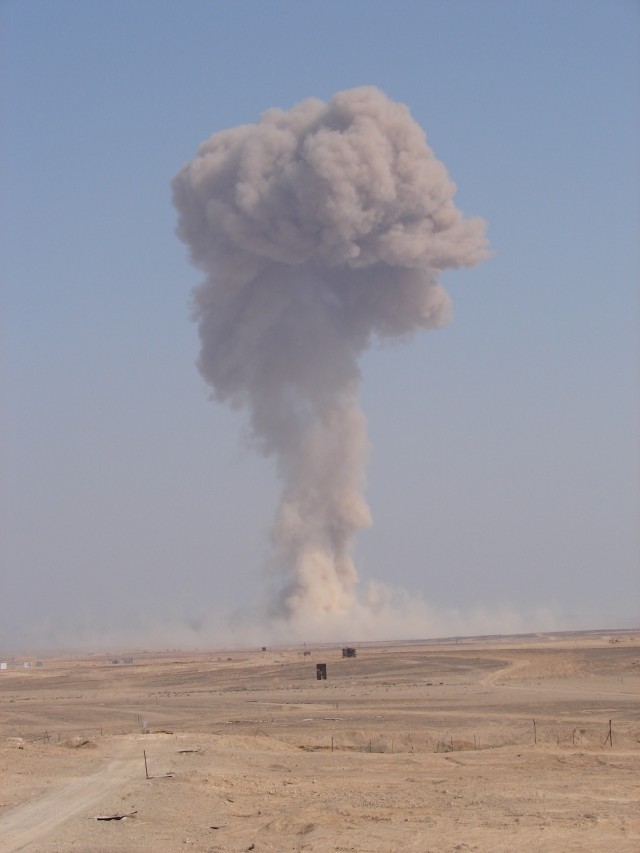REDSTONE ARSENAL, Ala. - The U.S. Army's Nuclear Arms Control Treaty (NACT) program participated in a large scale sensor calibration test in August. The Aug. 26 calibration event monitored the results of a scheduled detonation of out-of-date explosives at the Israeli Sayarim Military Range as part of normal munitions disposal. The detonation yielded a blast of approximately 100-tons by the Israel Defense Forces.
The U.S. Army Space and Missile Defense Command/Army Forces Strategic Command has been responsible for NACT since 2002 when the mission was transferred from the Defense Threat Reduction Agency to the U.S. Army SMDC.
Aca,!A"The main goal of this calibration experiment was to observe infrasound signals at numerous stations at distances up to 1,800 miles from the event,Aca,!A? said Mark Pickens, project lead for the Army NACT Program at USASMDC/ARSTRAT. Aca,!A"This goal was reached, thus establishing a Ground Truth (GT0) infrasound dataset for Middle East/Mediterranean region,Aca,!A? Pickens continued.
Aca,!A"The results we saw from the calibration experiment fell within expected parameters. The prepositioned infrasound station located throughout the Mediterranean region observed the expected or predicted shock waves.
Aca,!A"We were quite surprised to receive information that a German station picked up the event, and at more than 2,100 miles from the explosion site,Aca,!A? said Pickens. Aca,!A"One experimental array installed near Paris also detected signals from the explosion.Aca,!A?
Under the NACT program, USASMDC/ARSTRAT, acting on behalf of the U.S. government, is responsible for construction, operation, maintenance, sustainment and life-cycle management of 41 facilities, 38 fully mission capable and three yet to be constructed.
The NACT Program reports to the Treaty Manager at the Office of the Secretary of Defense. The command also works closely with other components of the Arms Control Interagency including the Department of the Army, Department of Energy, National Labs, and the Department of State.
The 100-ton explosion provided a target of opportunity to capture infrasound ground truth data and characterize infrasound propagation in the Middle East region for infrasound sensor and array calibration and the infrasound propagation modeling, signature analysis and characterization.
The NACT Program infrasound calibration objectives include capturing a ground truth infrasound calibration dataset for the Eastern Mediterranean and Middle East Region to improve the infrasound monitoring, signature and event analysis capabilities. Another objective is to characterize the infrasonic propagation in the region: travel times, spectra and amplitudes, depending on explosion magnitude, device design and atmospheric conditions.
To achieve these objectives, the USASMDC/ARSTRAT NACT program deployed technical and support teams to establish temporary infrasound arrays and acoustic sensors. The temporary arrays were deployed in Israel, Greece and Cyprus at distances of 50-500 km. More of a propagation effect was expected in Greece and points west (Tunisia, Sicily) than points north (Cyprus). The timeframe for this event was important as propagation is seasonally affected. Atmospheric conditions are favorable for these locations during the summer season.
The planned detonations were conducted by the Israeli Defense Forces personnel under the strict auspices and in accordance with all pertinent Israeli Sayarim Range regulations and safety guidelines and in full compliance with all local requirements and permits. The Sayarim Range is an active military range where U.S. and foreign personnel have regularly participated and collaborated on internationally sponsored programs. The USASMDC/ARSTRAT team has additionally contracted a U.S. government explosive's officer/expert to review safety and range activity planning.


Social Sharing